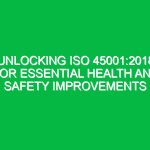Welcome and Purpose of the Toolbox Talk
Good morning, team! Today, we’re going to dive into an important topic that impacts our health and Safety while we work: Mosquitos. As we spend time outdoors or in areas where standing water may be present, understanding how to protect ourselves from these pests is essential. This Toolbox Talk will equip you with practical tips, insights, and Best Practices to ensure that our work Environment remains safe and healthy.
Understanding Mosquitos and Their Impact
Mosquitos are more than just a nuisance; they can pose significant health risks. They are known carriers of various diseases, including West Nile virus, Zika virus, dengue fever, and malaria. Understanding these risks is crucial, especially in regions where these diseases are prevalent. According to the Centers for Disease Control and Prevention (CDC), Mosquitos are responsible for infecting millions of people every year. Therefore, addressing Mosquitos during our work is not just about comfort but about maintaining our overall health.
The Life Cycle of Mosquitos
To better understand how to combat Mosquitos, let’s take a moment to review their life cycle:
- Eggs: Mosquitoes lay their eggs in stagnant water.
- Larvae: After a few days, the eggs hatch into larvae, which live in water.
- Pupae: The larvae then develop into pupae, where they undergo metamorphosis.
- Adults: Finally, they emerge as adult mosquitoes, ready to feed and reproduce.
Understanding this cycle helps us identify areas where Mosquitos may breed and allows us to take proactive measures.
Identifying Potential Hazards Related to Mosquitos
As we work in various environments, it’s crucial to recognize potential Hazards. Here are some common scenarios where Mosquitos may pose a risk:
- Projects near stagnant water sources, such as ponds, marshes, or construction sites.
- Working during dawn and dusk when Mosquitos are most active.
- Outdoor locations with dense vegetation or areas that are poorly maintained.
By identifying these hazards, we can better prepare ourselves and take appropriate preventive actions.
Best Practices for Mosquito Safety
Prevention Strategies
Now that we understand the risks associated with Mosquitos, let’s discuss some effective Prevention strategies:
- Wear Appropriate Clothing: Opt for long sleeves, long pants, and socks. Light-colored clothing can also help deter Mosquitos since they are attracted to dark colors.
- Use Insect Repellents: Apply EPA-registered insect repellents containing DEET, picaridin, or oil of lemon eucalyptus. Follow the manufacturer’s instructions for application.
- Eliminate Standing Water: Regularly check your work area for any stagnant water and remove it. This includes emptying containers, cleaning gutters, and ensuring proper drainage.
- Install Screens: Use screens on windows and doors to keep Mosquitos out of indoor spaces.
Personal Protective Equipment (PPE)
Using the right Personal Protective Equipment is vital in keeping Mosquitos at bay. Here are some recommendations:
- Wear light-colored, loose-fitting clothing.
- Consider wearing hats with netting if you are working in areas with high mosquito populations.
- Ensure your PPE is in good condition and covers as much skin as possible.
Real-Life Examples and Scenarios
Let’s take a moment to consider a couple of hypothetical scenarios:
Scenario 1: The Construction Site
Imagine you are working on a construction site near a pond. You notice a significant amount of standing water. If this site is not properly managed, it could become a breeding ground for Mosquitos. By working together to eliminate standing water and using repellents, you can significantly reduce the risk of mosquito bites.
Scenario 2: Outdoor Team Meeting
Suppose you have an outdoor team meeting scheduled during the evening. Mosquitos are usually more active during this time. To mitigate risks, consider rescheduling the meeting for earlier in the day or ensuring that everyone is wearing appropriate clothing and using repellents.
Regulations and Standards
It’s important to be aware of any Regulations or standards related to Mosquitos in our industry. Many organizations are required to follow guidelines set forth by health departments or environmental agencies, which may include:
- Regular inspections of work sites for potential mosquito breeding grounds.
- Reporting any disease outbreaks related to mosquito-borne illnesses.
- Following local regulations on pesticide use if necessary.
Compliance with these regulations not only helps keep us safe but also fulfills our legal obligations to maintain a safe working environment.
Encouraging Team Participation
Now that we’ve covered the essential tips for dealing with Mosquitos, I’d like to open the floor for discussion. Here are some questions to consider:
- Have you ever had an experience with Mosquitos while at work? How did you handle it?
- What additional measures do you think we can implement to further reduce mosquito risks?
- Are there any resources or tools you believe would help in our efforts?
Your feedback is valuable, and together, we can create a safer work environment.
Conclusion
In summary, Mosquitos can pose serious health risks, but by understanding their life cycle, identifying potential hazards, and implementing Best Practices, we can protect ourselves and our coworkers. Remember to wear appropriate clothing, use insect repellents, and eliminate standing water whenever possible. Thank you all for your attention and commitment to safety. Let’s stay vigilant and proactive in our efforts to keep our workplace healthy and safe!


